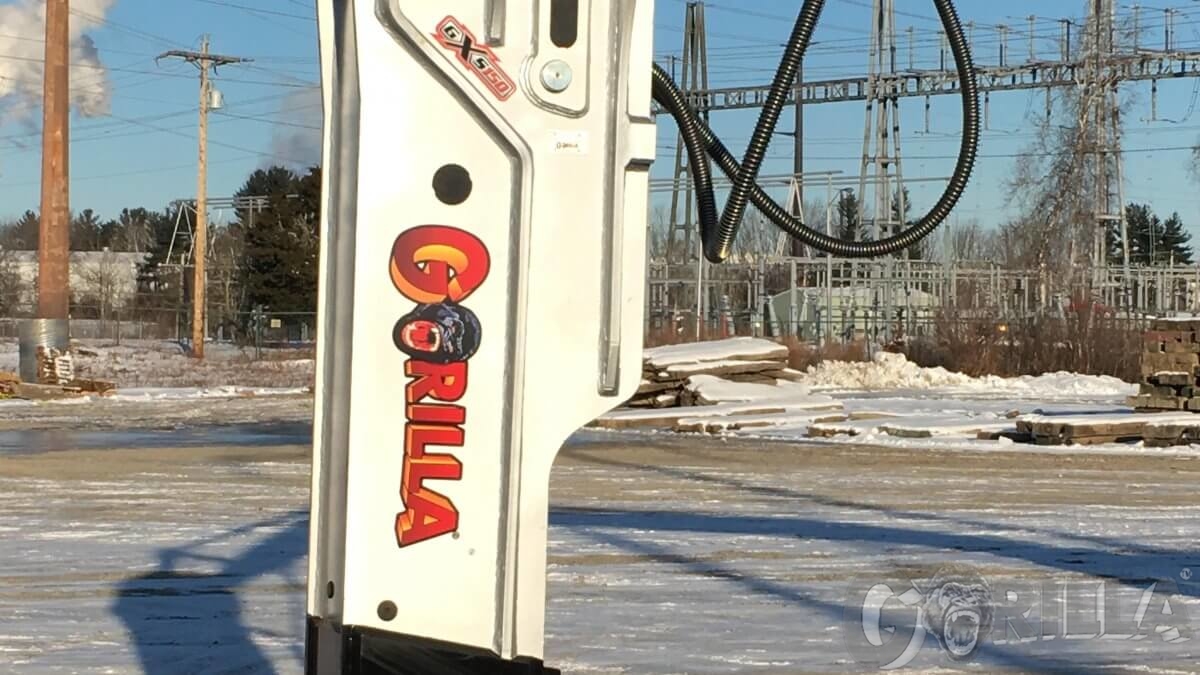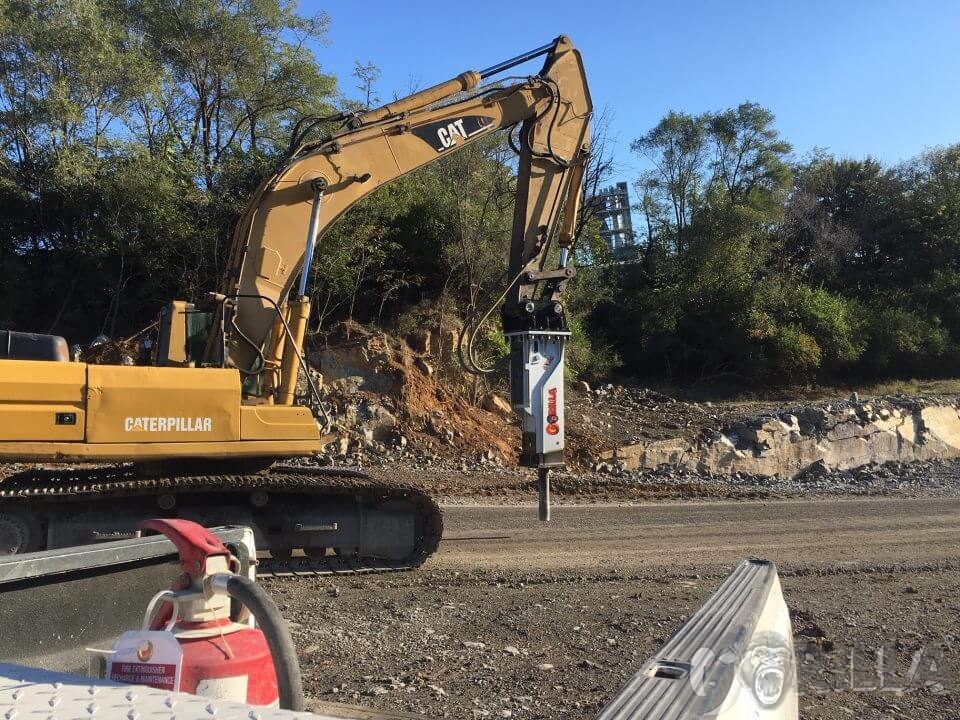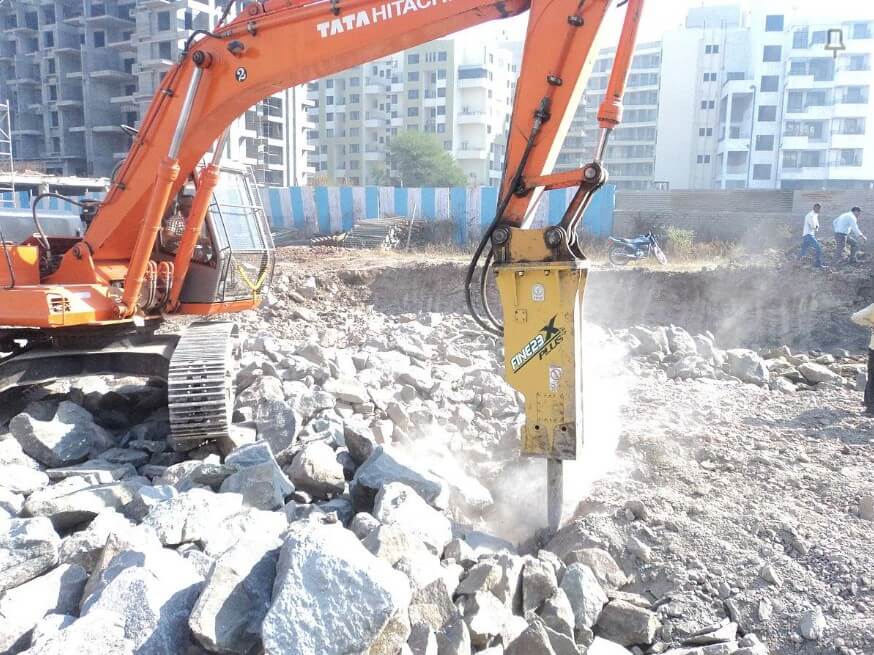
Welcoming Ramco Construction Tools’ Customers!
November 17, 2022
Hydraulic Hammers You Should Use in 2023
March 9, 2023In the construction sector, hydraulic hammers and breakers are crucial machinery employed in construction and demolition. They can be used in construction to break up rock, dig holes, or break up earth to make drilling holes easier and are frequently equipped with skid steers, small excavators, loader backhoes, and large excavators.
Hydraulic hammers drill blasting holes for quarry operations, drive piles for building or fence foundations, and drive steel rods deeply into the ground. Hydraulic hammers destroy old structures, roads, or automobiles. The size of the compression chamber and the amount of pressure applied to the fluid inside the chamber determines the hammer’s power.
How Does a Hydraulic Hammer Work?
French mathematician, scientist, and inventor Blaise Pascal made significant contributions to mathematics, geometry, and mechanical engineering. The hydraulic hammer was developed due to his discovery of Pascal’s Law, often known as the law of hydrostatics. According to this rule, pressure applied to one area of enclosed liquid results in equal pressure being applied to all other sites.
The lower side of the piston faces the chamber when high pressure comes in, which alters the flow direction. The chamber and low-pressure circuit then reverse the piston action. As opposed to the upper side, the lower side now experiences a more significant force, and the piston rises gradually. Now, the gas sealed in the gas chamber is compressed by the piston.
Due to the area difference between the valve’s upper and lower faces, the valve begins to lift as the piston rises and oil pours into the chamber. The high pressure enters the chamber for piston reversion when the valve rises and is connected. The piston begins to descend because of the difference in the area between the top and lower faces receiving the same pressure. The pressure of the gas in the gas chamber increases the piston’s speed as it descends.
The accelerating piston strikes the chisel. The oil enters the chamber as the piston is descending and is changed to low pressure when it reaches the chamber. At this point, the pressure in the chamber supporting the valve is reduced. The pressure inside the chamber stays high at all times. As a result, the valve lowers. When the valve lowering procedure is finished, the state depicted in the first section of the figure is established, enabling continuing chisel striking.
The Types Of Hydraulic Hammers
The 3 Class Types of Hydraulic Hammers include The Small Class, The Medium Class, and The Large Class.
1. Small Class
The best hydraulic hammers for indoor remodeling jobs are the smaller models. They can break through concrete for modest patch jobs, dig fence posts, and travel more swiftly than the other two classes while using less PSI. Small-class hydraulic hammers are swift and effective when utilized for the correct operations.
2. Medium Class
The most prevalent hydraulic hammers are of the medium class. In this class, the PSI ranges from 2,000 to 3,000. This indicates that while it has a significant impact on the majority of projects, it can nonetheless regularly make touch with the ground. A medium-class hydraulic hammer is used for various utility projects, huge concrete tasks, and landscaping stones.
3. Large Class
Only use large-class hydraulic hammers for complicated tasks, such as mining or excavation operations. Without prior experience or under the guidance of an experienced person, you shouldn’t operate a large-class hydraulic hammer. The hammer descends with a strong force with a PSI of over 2300 and comes down less frequently per minute than small or medium hydraulic hammers because the force is so great.
How Can Gorilla Hammers Assist?
Call Gorilla Hammers immediately if you require pneumatic valves like air rams, air treatments, filter regulators, diverter blocks, lubricators, and regulators. We offers industrial machines for sale and rent to both people in the general public and large organizations. You can reach us at 1 (888) 814 – 6745. We look forward to hearing from you!




